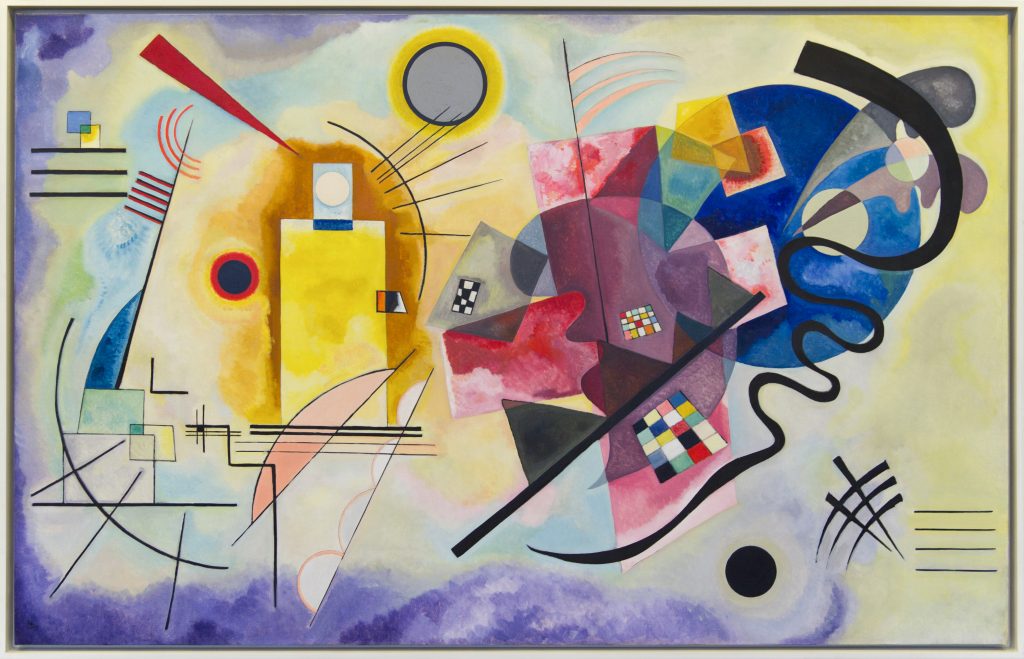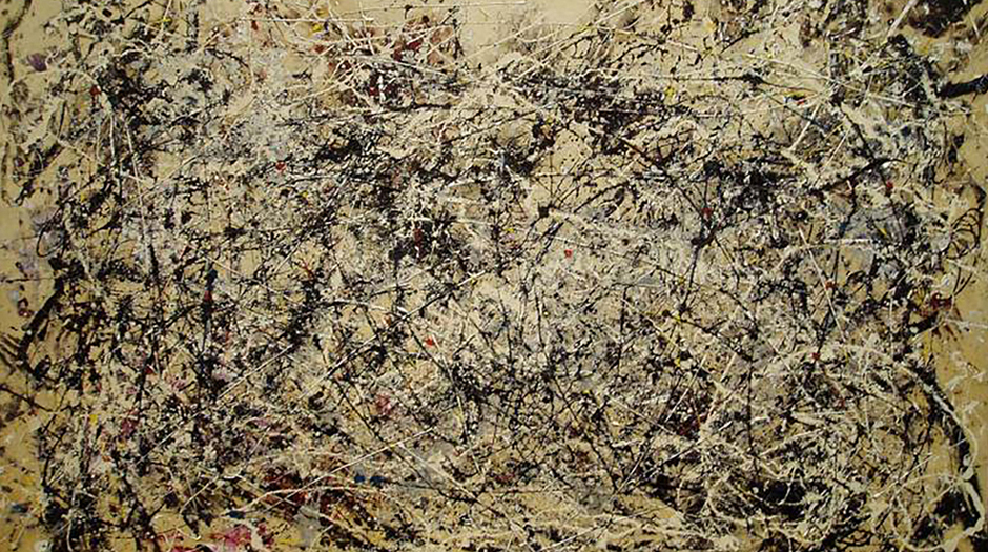How to Paint Abstract Art: An In-Depth Beginner's Manual
Abstract art has enchanted viewers for more than a hundred years, providing a distinctive avenue to convey feelings, concepts, and structures free from the limitations of lifelike depictions. Trailblazers such as Wassily Kandinsky and Jackson Pollock championed this genre, prioritizing hue, form, and surface to stir sentiments instead of illustrating tangible items.
For novices in the realm of painting, abstract art serves as a superb entry point since it fosters trial and error without demanding flawless sketching abilities. This manual will delve into aspects ranging from collecting essentials to refining methods, empowering you to craft your own lively creations. Be it for adorning your living space or merely relaxing through creativity, engaging in abstract painting proves both healing and gratifying.
Assembling Essential Supplies
Prior to embarking on your canvas journey, compiling appropriate equipment is crucial. Newcomers frequently opt for acrylic paints owing to their adaptability, rapid drying, and user-friendliness. A fundamental assortment of hues is necessary: core tones such as crimson, azure, and amber, alongside ebony and ivory for blending. Dense acrylics excel in generating surface depth, whereas liquid variants suit seamless merges. Assorted brush dimensions are vital—planar, circular, and almond-shaped varieties yield diverse marks. Spatulas or blending knives prove excellent for dispersing pigment and enhancing volume, echoing the splash methods iconically employed by Pollock.
A robust canvas or dense sheet acts as your foundation; pre-stretched canvases are favored for their expert appeal. Additional necessities encompass a mixing board for color fusion, vessels for diluting pigment, and cloths or absorbent sheets for tidying. To infuse uniqueness, ponder integrating atypical implements like porous materials, plastic cards, or domestic objects for distinctive impressions.
Should budget constraints apply, commence with learner-level provisions, yet splurge on superior brushes to prevent fiber loss during application. After preparation, safeguard your area with periodicals or protective sheeting, given the potential messiness of abstract endeavors!
Grasping Fundamental Methods
Abstract creation flourishes through instinct, yet acquiring core skills can bolster assurance. A straightforward approach involves the dilution method, thinning pigment with liquid to form sheer strata, akin to aqueous effects but leveraging acrylic's transparency management. This progressively constructs profundity. An additional novice-accessible tactic is imprint creation: employing brushes, blades, or digits to doodle, speck, or etch into moist pigment, injecting impulsiveness.
Merging is pivotal for fluid shifts—moist-upon-moist merging entails combining shades straight on the base while damp. For opposition, experiment with arid stroking, loading a tool sparingly and skimming it over a parched plane to fashion textured accents. Venture into cascading: blend runny acrylics with a flow enhancer and permit physics to orchestrate, yielding natural, undulating designs. These strategies derive from time-honored practices, such as Kandinsky's angular abstractions, urging exploration of silhouette and tonal synergy.
Surface quality holds a prominent position in abstract works. Integrate sculpting compound or viscous enhancers to erect elevated planes, subsequently overlaying them for a spatial sensation. Incising, carving through overlays to unveil subjacent shades, imparts mystery.
Bear in mind, no erroneous path exists—each gesture advances your individual flair.
Guided Process for Your Initial Abstract Creation
Embark on a learner's endeavor: an emotive, vivid abstract vista. Phase 1: Prime your base with a preparatory layer for enhanced grip, allowing it to set.
Phase 2: Select a palette scheme. For vigor, choose heated nuances like tangerines and scarlets; for serenity, ceruleans and emeralds. Dispense pigments onto your board and initiate with expansive gestures via a broad tool or scraper. Veil the base casually, preserving lighter zones for variance.
Phase 3: Append strata. Following the foundation's curing (acrylics solidify swiftly, within 10-30 minutes), infuse auxiliary tones. Utilize a scraper to apply denser pigment, forming crests. Soften boundaries gently with a moistened tool to evade stark delineations.
Phase 4: Infuse surface. Immerse a porous item in pigment and pat haphazardly, or trickle diluted pigment aloft for effects reminiscent of Pollock. Should it appear overly tumultuous, retreat and evaluate—abstract pieces frequently refine from afar.
Phase 5: Polish particulars. Introduce slender strokes with a fine tool or simulated script (hasty notations mimicking writing) for allure. Employ vacant areas judiciously; total coverage isn't mandatory.
Phase 6: Preserve your piece. Upon contentment, administer a protective coating for durability and luster. This uncomplicated sequence can produce remarkable outcomes, and through repetition, you'll cultivate a distinctive methodology.
Venturing into Sophisticated Approaches
With accumulated expertise, delve into intricate procedures. Splash creation, elevated by Jackson Pollock, encompasses hurling or cascading pigment for kinetic vitality.
Regulate the stream by modifying consistency via enhancers. Aerosol application introduces hazy impressions—deploy a mister with thinned acrylics for nuanced slopes.
Motifs and recurrence can organize your arrangement; duplicate contours or themes to direct the observer's gaze. Mimicked assemblage methods entail stacking ripped parchment or textiles beneath pigment for hybrid allure. Trial with nontraditional devices: a wiper hauls pigment evenly, whereas a toothed tool generates rippled strokes.
Merge diverse mediums like tint or graphite for amplified depth. Acrylic dilution atop ink sketches fuses flawlessly, augmenting abstraction. Examine luminaries such as Kandinsky for structural motivation or Pollock for kinetic creation to advance your endeavors.
Frequent Errors and Success Strategies
Inexperienced artists commonly overanalyze layouts, resulting in dulled shades from immoderate fusion. Advice: Operate in tiers, permitting each to cure to sustain brilliance. Another snare is dreading flaws—welcome them; abstract art transforms "blunders" into highlights.
Sustain equilibrium: Excessive uniformity may seem stagnant, whilst disarray overpowers. Mentally apply the tripartite principle to position emphases. Sanitize implements immediately to avert pigment solidification.
For stimulation, tour exhibitions or digital lessons. Melodies can shape your disposition and gestures—create to lively rhythms for dynamic compositions. Engage consistently; mere quarter-hours daily hones proficiency.
Illumination is significant: Organic radiance discloses authentic tones amid fabrication. Ultimately, autograph your creation and disseminate it—input hastens progression.
Discovering Motivation and Refining Your Approach
Abstract art sources from existence: sentiments, the environment, or reveries. Maintain a notebook for notions. Analyze renowned pieces—Kandinsky's multisensory creations associate shade with acoustics, while Pollock's splashes seize movement.
Participate in groups or seminars for drive. Trial audaciously; your manner will surface organically. Gradually, abstract painting evolves into a private dialect, articulating the indescribable.
To wrap up, abstract painting is approachable, liberating, and infinitely inventive. Through dedication, you'll fashion works that profoundly connect. Seize your tools and commence now!
(Word count: approximately 1510)
FAQ
What defines abstract art?
Abstract art employs contours, shades, and configurations to produce its impact, rather than portraying identifiable entities or vistas. It concentrates on provoking feelings or notions via non-literal avenues.
Is innate skill required for abstract painting?
Absolutely not; abstract painting suits novices as it stresses exploration over accuracy. With rehearsal and receptivity, anyone can yield significant output.
Which pigments suit abstract art best?
Acrylics are advised for their flexibility and swift drying. Oils provide deeper fusions but necessitate greater forbearance from extended setting times.
What's the duration for finishing an abstract piece?
It fluctuates—basic items might require sixty minutes, whereas stratified creations could extend across days awaiting desiccation intervals.
May I market my abstract creations?
Certainly, numerous creators vend abstracts digitally or at regional venues. Assemble a collection and exploit sites like Etsy or communal platforms for display.
What if my creation deviates from intent?
That's inherent to the journey! Abstract art frequently morphs unpredictably. You can perpetually overlay or integrate the "flaw" into a fresh concept.
Exist digital assets for further education?
Abundantly! YouTube demonstrations and creative weblogs furnish complimentary sequential directives. Commence with introductory compilations for practical showcases.





